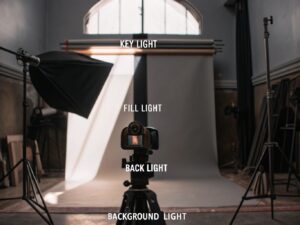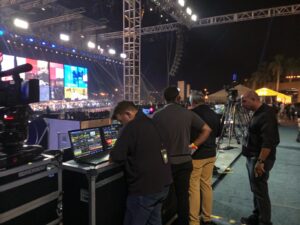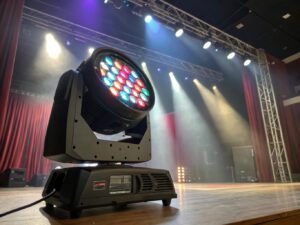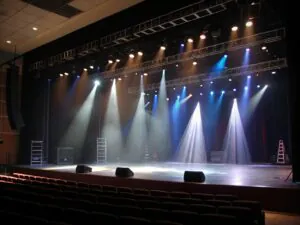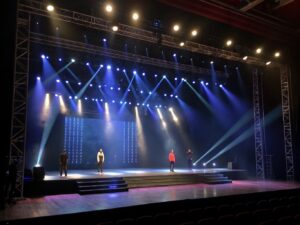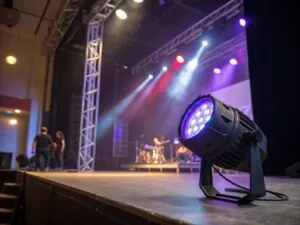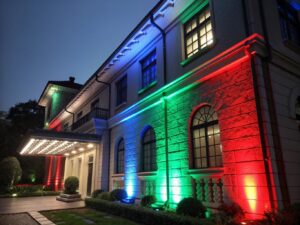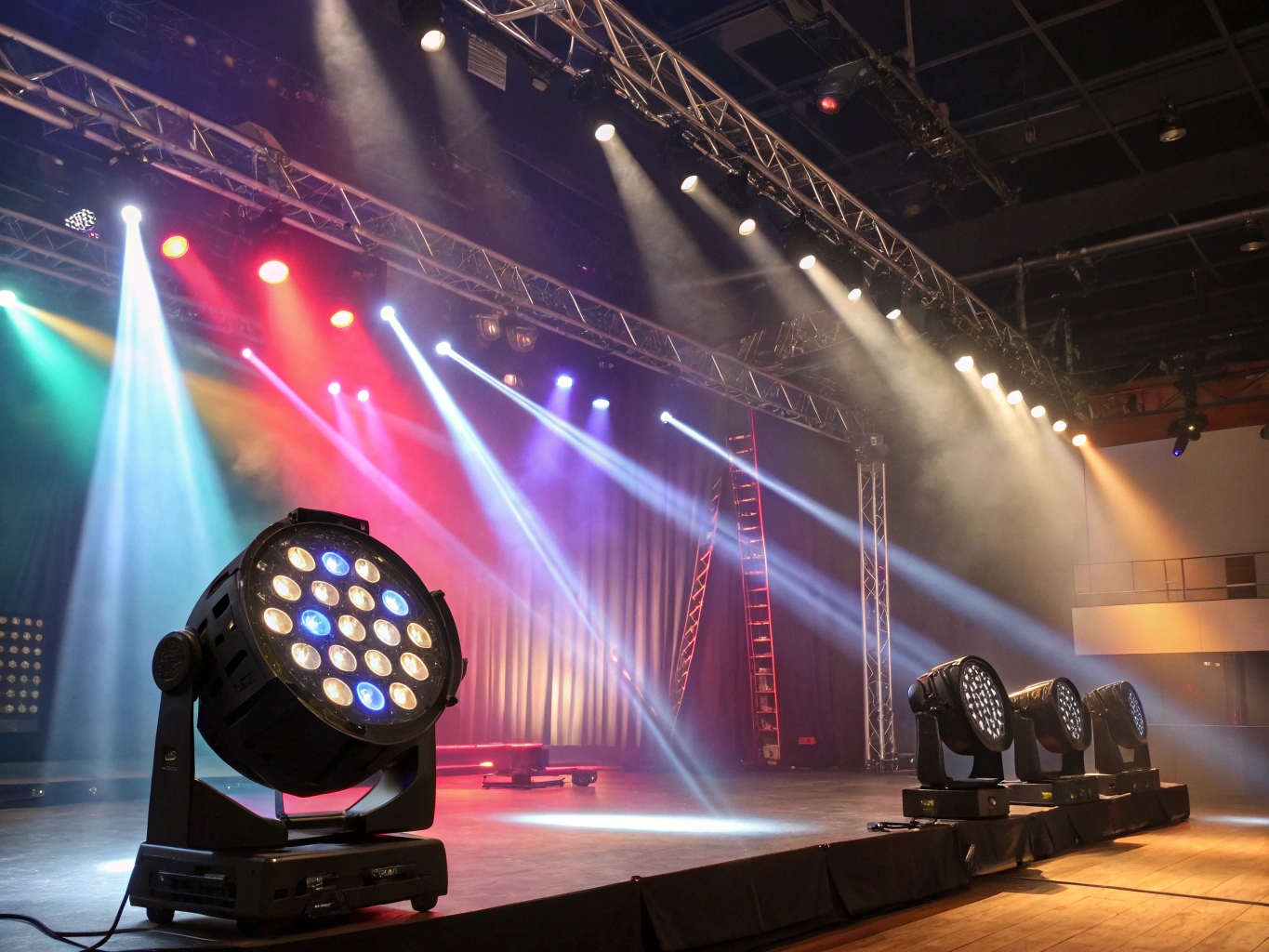
Still thinking in terms of old, hot, power-hungry lamps? When you're buying new gear, using outdated knowledge can lead to poor choices in brightness, color, and efficiency.
LED stage lighting uses efficient, solid-state light-emitting diodes1 to create light instead of a glowing filament. This results in dramatically lower power use, richer colors without gels, less forward-projected heat, and an incredibly long lifespan compared to traditional fixtures.

I remember the first time I saw a high-quality RGB LED PAR can. The depth of the color, without a single gel, was a revelation. In my 19 years in this industry, I've watched this technology go from a novelty to the absolute standard. But it's more than just a new type of bulb; it's a completely different way of thinking about light. It changes everything from power calculations2 to creative possibilities. For a technician like Nick, understanding this shift is not just useful, it's essential for staying relevant and effective. Let's break down exactly what that means.
What are LED stage lights used for?
Do you need to light a show but feel overwhelmed by the different types of fixtures? Using the wrong tool for the job wastes your budget and can dilute your entire design's impact.
LEDs are used for every application on stage. They function as powerful PAR cans for color washes3, profile fixtures for sharp spots and gobos, and dynamic moving heads for stunning effects. Their versatility has made them the modern workhorse for virtually any lighting task.

The key thing to understand is that "LED light" isn't one type of fixture; it's the technology inside the fixture. The innovation is that one LED fixture can now do the job that used to require multiple traditional lights and accessories. For instance, creating a deep blue wash used to mean taking a tungsten PAR can and putting a dark blue gel in front of it, which cut out over 90% of the light. To get a red wash, you needed a different light with a red gel. Now, a single RGBW (Red, Green, Blue, White) LED fixture can create millions of colors on command, all at nearly full brightness. For everyone in this business, from designers to technicians like Nick, this has been a revolution. It means fewer fixtures to hang, less power to run, and almost limitless creative speed. It’s why my philosophy at Monalight is "innovation is soul". This technology embodies that idea completely.
LED Fixtures and Their Roles
| Fixture Type | How LEDs Improved It | Common Use |
|---|---|---|
| LED PAR Can | Instant color mixing without gels, low power. | General stage wash, uplighting. |
| LED Profile/Leko | High brightness with less heat, color mixing included. | Projecting sharp spots and textured gobos. |
| LED Moving Head | Faster, lighter, more features (color, gobo, prism) in one unit. | Dynamic effects for concerts and events. |
| LED Batten/Strip | Even color wash for backdrops and cycloramas. | Scenery and cyc lighting. |
How long do LED stage lights last?
Are you constantly spending money and time changing burnt-out lamps? This constant maintenance cycle is frustrating and pulls you away from the creative work that really matters.
A professional LED stage light fixture is typically rated to last between 20,000 and 50,000 hours. This is immensely longer than traditional tungsten lamps (500-1,000 hours), dramatically reducing replacement costs and maintenance labor over the fixture's life.

This long lifespan is one of the biggest selling points, but it's important to know what "lifespan" means for an LED. Unlike a tungsten lamp that suddenly burns out, an LED's brightness fades very slowly over time. The lifespan rating (often called L70) is the point at which the diode is projected to have lost 30% of its initial brightness. So a 30,000-hour fixture will still work after 30,000 hours, it just won't be as bright. The biggest enemy of an LED's long life is heat. This is why our motto at Monalight is "quality is life." A cheap fixture with poor heat management will lose brightness much faster and fail sooner. A well-engineered fixture with a robust cooling system will reliably hit those high lifespan numbers. For a rental house or an installation, this is a massive financial benefit. The savings on replacement lamps alone can pay for the fixture over time.
What is the downside of LED lights?
Do you think that LEDs are a perfect technology with no drawbacks? Believing that can lead to disappointment with color quality or when trying to achieve a more traditional look.
The main downsides are a higher initial purchase price and, in cheaper units, poor color rendering (CRI). Some designers also miss the classic warm dimming curve4 of tungsten, though high-end LEDs now emulate this feature very well.
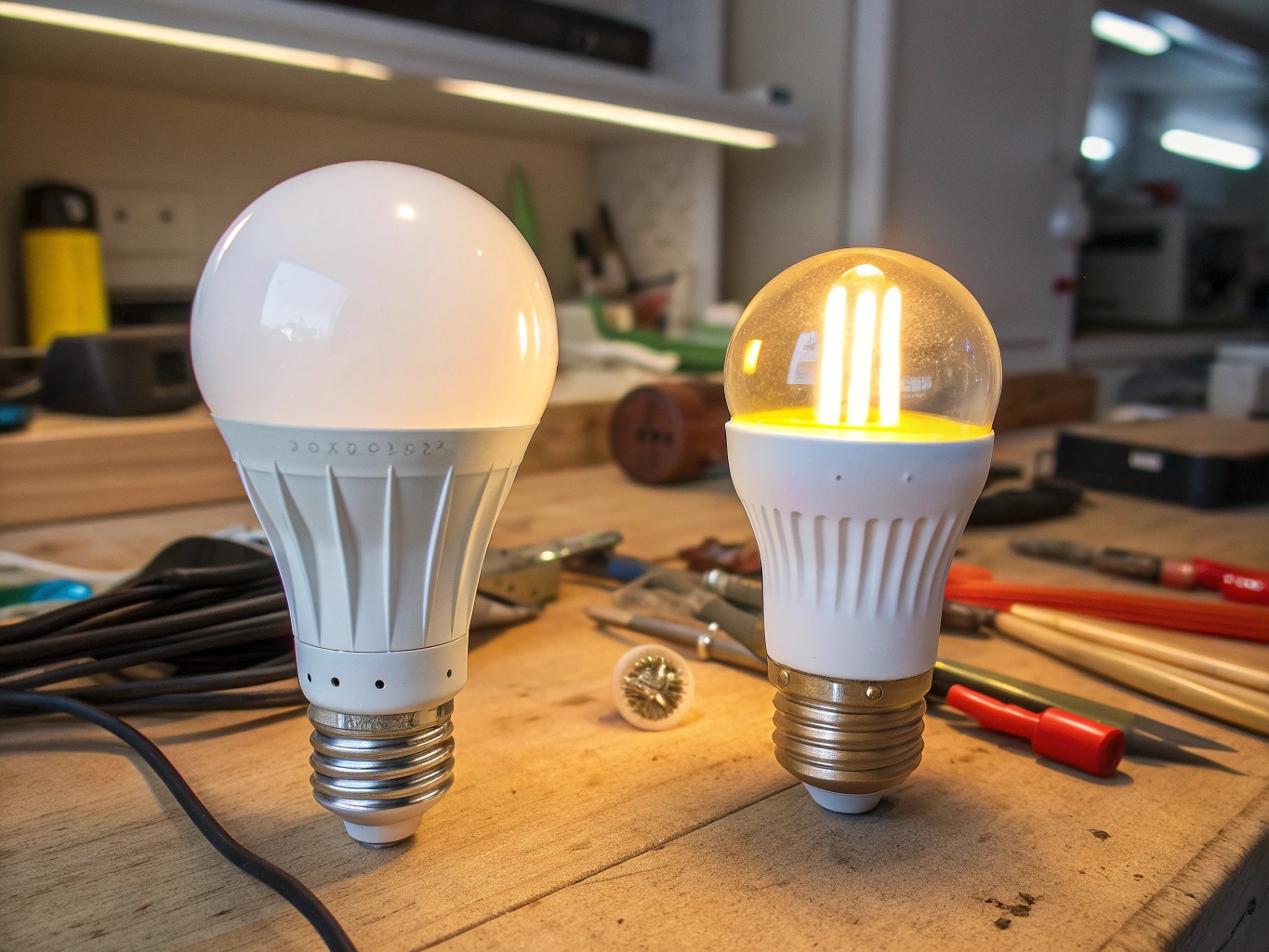
Let's be honest, no technology is perfect. The most obvious hurdle for many is the upfront cost. A quality LED fixture is more expensive than its old tungsten equivalent. But I always tell my customers to think about the Total Cost of Ownership (TCO). When you factor in the money saved on electricity, replacement lamps, and gels over several years, the LED fixture often comes out much cheaper. The more critical downside is Color Rendering Index (CRI)5. This is a measure of how accurately a light source shows an object's true colors. The human eye is very sensitive to skin tones, and a low-CRI LED can make an actor look pale or sick. This is a common problem with cheap fixtures. It’s why we test our light sources obsessively at the factory. Another issue, especially for theater purists, was the way LEDs dim. A traditional lamp gets warmer and redder as it dims. LEDs just got less bright, which felt cold and unnatural. The good news is that modern, high-quality fixtures now include dedicated amber LEDs and special software to perfectly replicate that warm "red shift" glow.
Are LED stage lights hot?
Are you tired of performers sweating under the intense heat of old stage lights? That heat is not only uncomfortable, but it can also be a hazard, melting gels and damaging scenery over time.
No, the light beam from an LED stage light is not hot. While the electronics at the base of the LED generate heat that must be managed by heatsinks and fans, they project almost no infrared heat forward. The stage stays much cooler.

This is one of the most misunderstood aspects of LED lighting. A traditional tungsten PAR can is basically a space heater that happens to create light; more than 90% of its energy is wasted as heat projected forward in the beam. I have the burn marks from my early days as a technician to prove it! LEDs work completely differently. They are very efficient at converting electricity directly into light (electroluminescence). Heat is produced as a byproduct, but it's generated at the back of the LED chip and needs to be drawn away by a cooling system. This means the actual light beam that shines on a performer is remarkably cool to the touch. This has huge benefits. Performers are more comfortable and less fatigued. You don't have to worry about gels melting or a hot light being too close to a curtain. And as a bonus, it puts less strain on the venue's air conditioning system, which can lead to significant energy savings6.
Conclusion
In short, LED technology has completely reshaped our industry. It delivers superior efficiency, color control, and a cooler, safer stage, making it the undeniable standard for all modern performance.
-
Learn about the technology behind light-emitting diodes and how they revolutionize stage lighting for better performance. ↩
-
Understanding power calculations is crucial for optimizing lighting setups and ensuring efficient energy use. ↩
-
Explore the concept of color washes and how they can transform the atmosphere of a performance. ↩
-
Understand the warm dimming curve and how modern LEDs replicate this feature for better lighting quality. ↩
-
Learn about CRI and its significance in achieving accurate color representation in stage lighting. ↩
-
Discover the energy-saving benefits of LED lights and their impact on venue operations. ↩
You may also be interested in:
